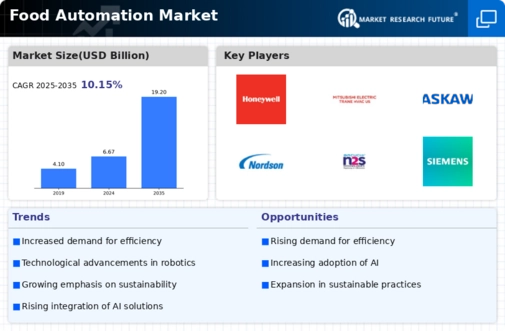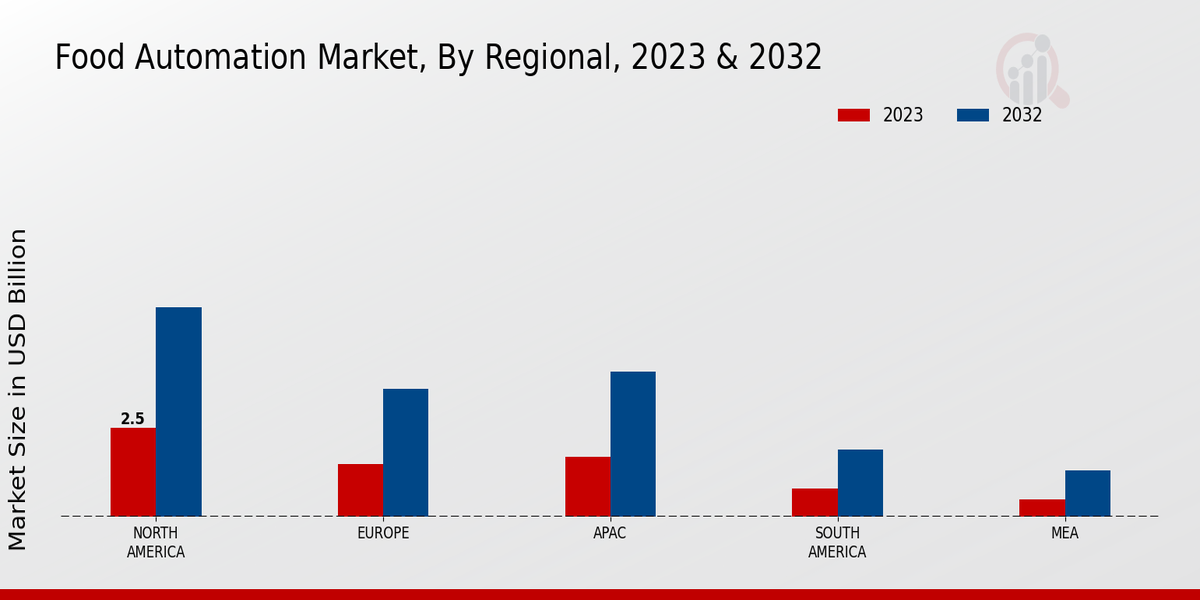Rising Labor Costs
Increasing labor costs across various regions are driving the Global Food Automation Market Industry towards automation solutions. As wages rise, food manufacturers are compelled to invest in automated systems that reduce dependency on human labor. This shift is particularly evident in developed economies, where labor shortages further exacerbate the issue. By automating processes, companies can maintain production levels while minimizing costs. The projected growth of the market to 19.2 USD Billion by 2035 underscores the urgency for businesses to adapt to these economic pressures. Automation not only mitigates labor costs but also enhances operational efficiency.
Market Growth Projections
The Global Food Automation Market Industry is poised for substantial growth, with projections indicating a rise from 6.67 USD Billion in 2024 to 19.2 USD Billion by 2035. This growth is underpinned by a compound annual growth rate of 10.11% from 2025 to 2035. Various factors contribute to this upward trend, including technological advancements, rising labor costs, and increasing consumer demand for quality. As the industry evolves, the integration of automation technologies will likely redefine food production processes, enhancing efficiency and sustainability.
Sustainability Initiatives
Sustainability initiatives are becoming a cornerstone of the Global Food Automation Market Industry. As environmental concerns rise, food manufacturers are increasingly adopting automated solutions that minimize waste and energy consumption. Automation can optimize resource use, leading to more sustainable production practices. For example, automated systems can adjust energy usage based on real-time data, significantly reducing the carbon footprint. This shift towards sustainability is not only beneficial for the environment but also aligns with consumer preferences for eco-friendly products. The market's growth trajectory indicates that sustainability will play a pivotal role in shaping the future of food automation.
Technological Advancements
The Global Food Automation Market Industry is propelled by rapid technological advancements that enhance efficiency and productivity. Innovations such as robotics, artificial intelligence, and the Internet of Things are transforming food processing and packaging. For instance, automated systems can now monitor food quality in real-time, reducing waste and ensuring safety. As a result, the market is projected to reach 6.67 USD Billion in 2024, reflecting a growing reliance on technology to meet consumer demands. These advancements not only streamline operations but also contribute to sustainability efforts, making food production more environmentally friendly.
Global Supply Chain Optimization
The need for optimized supply chains is a critical driver of the Global Food Automation Market Industry. As global trade expands, food manufacturers face challenges related to logistics, inventory management, and distribution. Automation technologies, such as advanced tracking systems and automated warehousing, facilitate smoother operations and reduce delays. By streamlining supply chains, companies can respond more effectively to market fluctuations and consumer demands. The anticipated growth of the market to 19.2 USD Billion by 2035 reflects the increasing importance of efficient supply chain management in the food sector.
Consumer Demand for Quality and Safety
The Global Food Automation Market Industry is significantly influenced by the increasing consumer demand for high-quality and safe food products. As consumers become more health-conscious, manufacturers are compelled to adopt automation technologies that ensure consistent quality and safety standards. Automated systems can perform rigorous quality checks and traceability, which are essential in maintaining consumer trust. This trend is likely to contribute to the market's growth, with a projected CAGR of 10.11% from 2025 to 2035. Meeting these evolving consumer expectations is crucial for companies aiming to remain competitive in the global marketplace.













